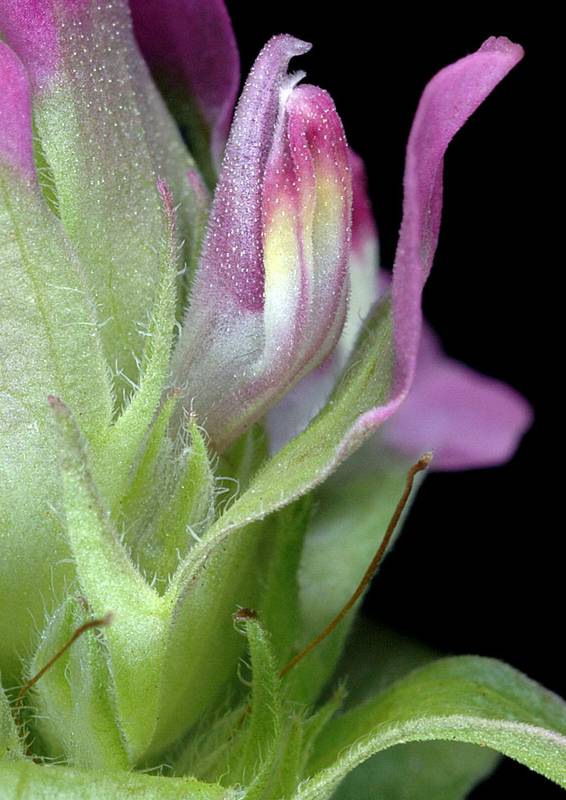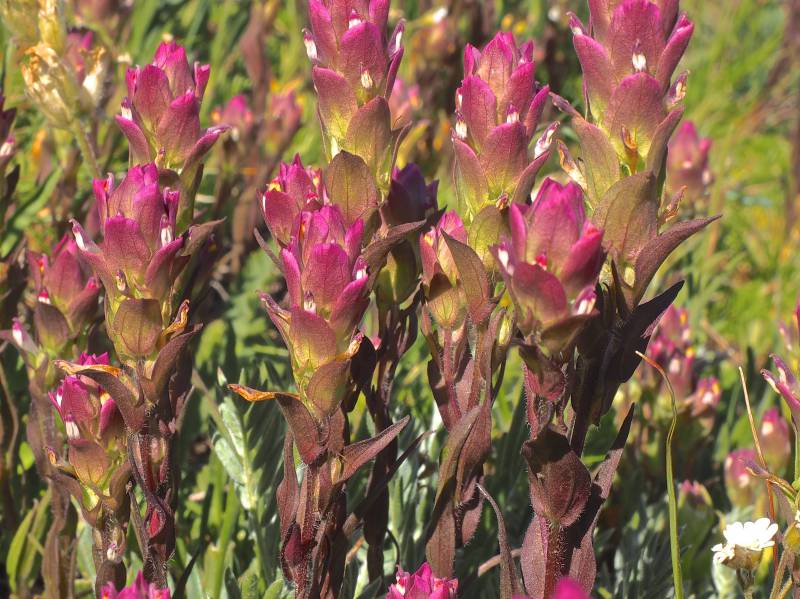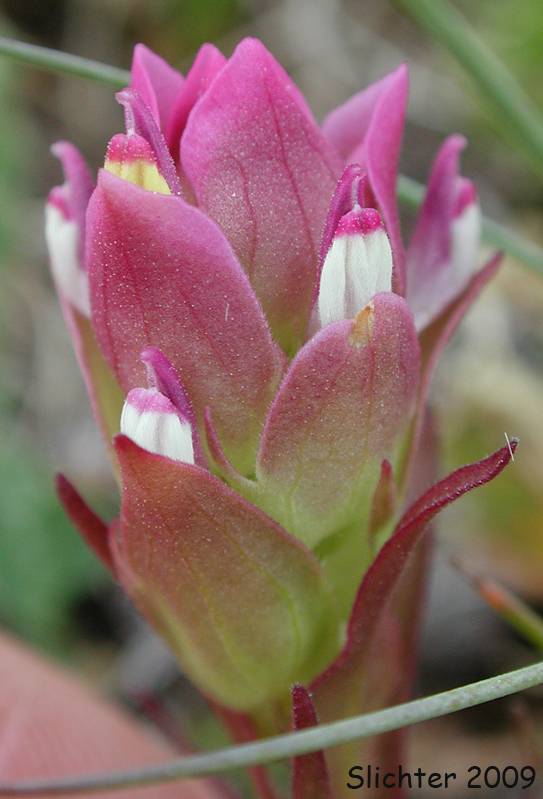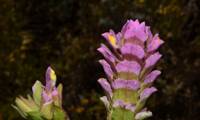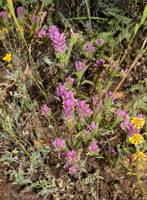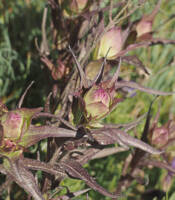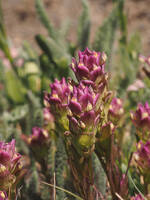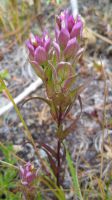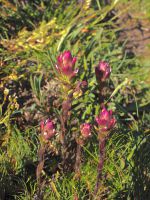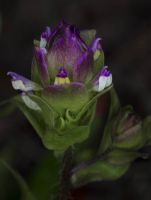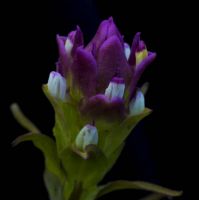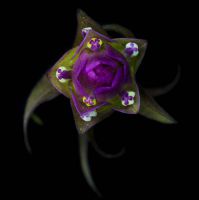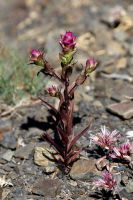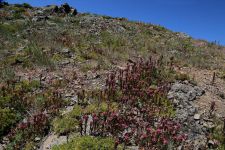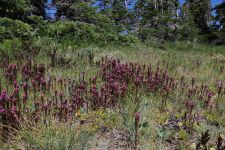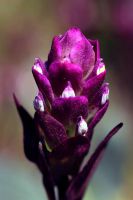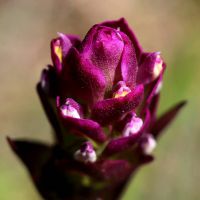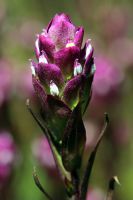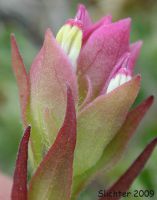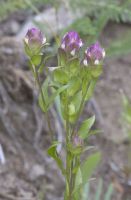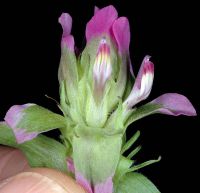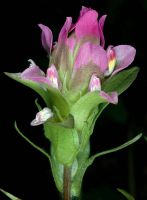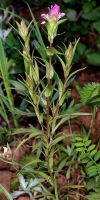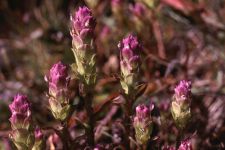Distribution: Occurring west of the Cascades crest in the Olympic Mountains; British Columbia to Oregon and California.
Habitat: Fairly dry meadows and rocky slopes, mid- to high elevations in the mountains.
Flowers: July-September
Origin: Native
Growth Duration: Annual
Conservation Status: Not of concern
Pollination: Bumblebees, bees, flies, moths
Slender annual, the stem 1-3.5 dm. tall, simple or more commonly branched above; herbage sub-glabrous.
Leaves alternate, all cauline, entire, linear to narrowly lanceolate, 1-4 cm. long; bracts abruptly differentiated from the leaves, shorter, broader and blunter, occasionally with a pair of lateral lobes below the middle, the upper ones pink-purple.
Inflorescence a dense, showy spike; calyx 2-cleft, with bifid segments; corolla 10-13 mm. long, purplish, bilabiate, mostly covered by the bracts, the lower lip somewhat inflated, with 3 inconspicuous, short teeth; upper lip hooded, enclosing the 4 stamens, about 1 mm. longer than the lower lip.
Capsule.
Publication: Botany Fortieth Parallel 458. 1871.
PNW Herbaria: Specimen records of Orthocarpus imbricatus in the Consortium of Pacific Northwest Herbaria database
WA Flora Checklist: Orthocarpus imbricatus checklist entry
OregonFlora: Orthocarpus imbricatus information
E-Flora BC: Orthocarpus imbricatus atlas page
CalPhotos: Orthocarpus imbricatus photos

